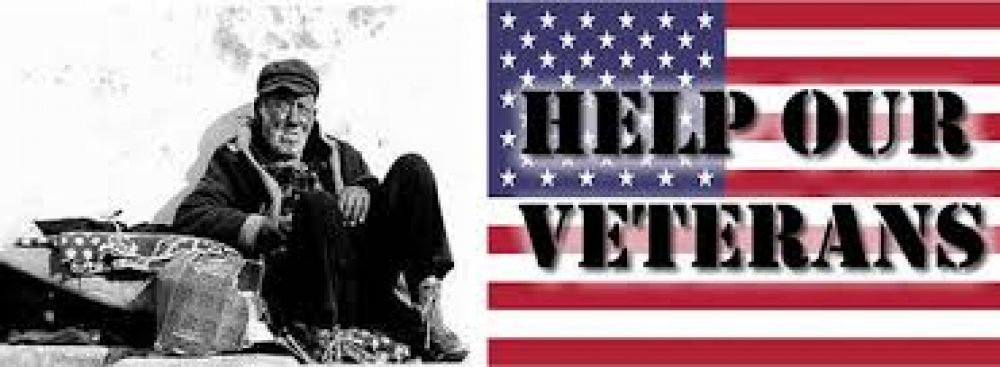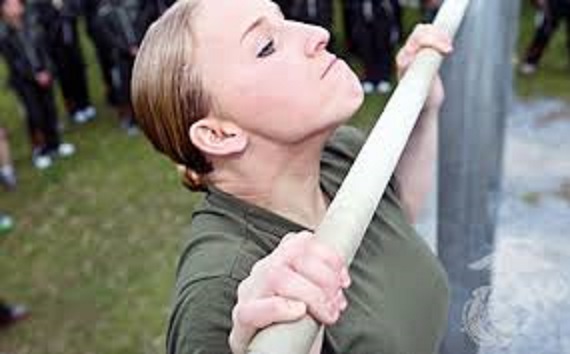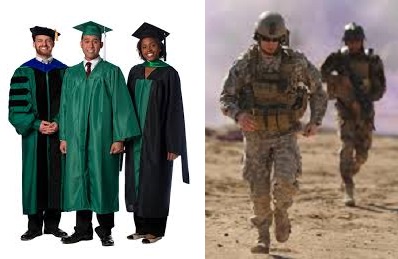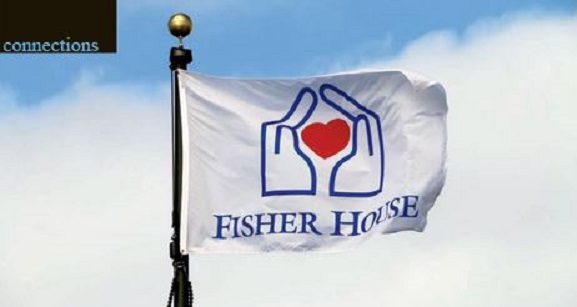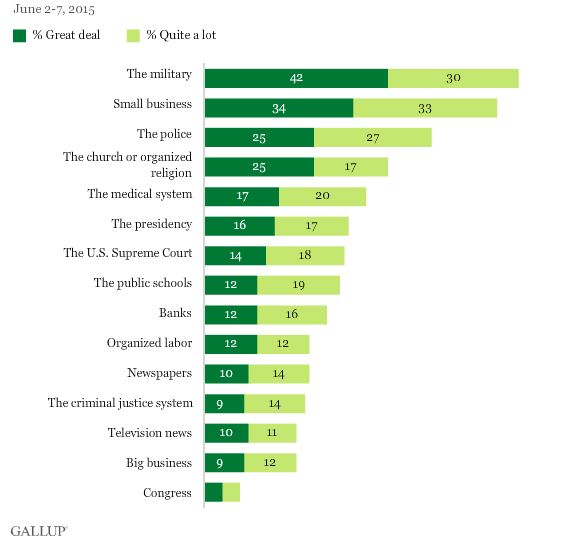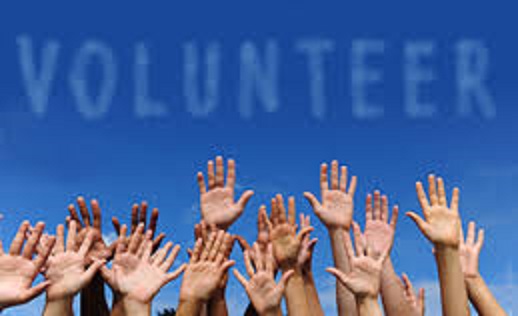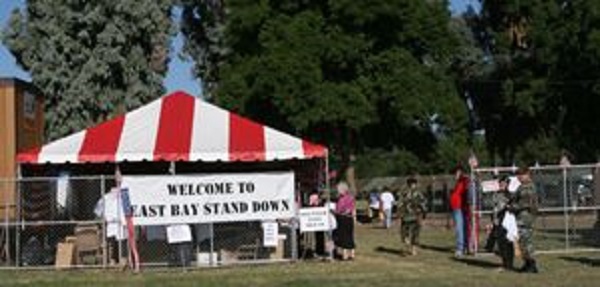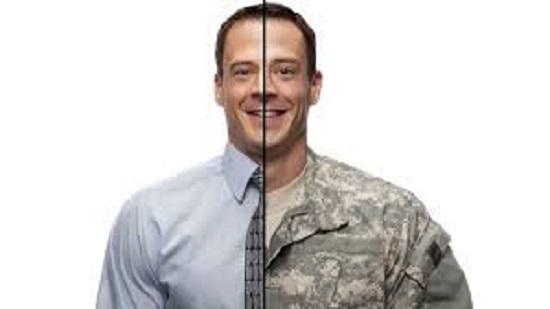
U.S. servicemen and servicewomen often face conditions when they return from their service that are worse in many respects than during their service. Even though they may have endured life-threatening combat and great discomforts, they were fed and clothed and sheltered (to some extent) by the military establishment. But when they leave the military they often are on their own, and often suffer from mental ilness, homelessness, alcohol/drug abuse, and other woes. Fortunately, there are a number of initiatives started, or supported, by well-meaning people that can help these veterans in their new civilian lives. One example is super-star country-western singer Tim McGraw, who is an ambassador for Operation Homefront, which has a long list of very basic current needs such as housing, utilities, food, and car. If things are so bad that they are barely surviving, it’s little wonder that a survey by the Disabled American Veterans charity released on November 10 found that just 44 percent of veterans report they have received the health, disability, financial and education benefits they were promised and only 18 percent believe disabled veterans have received the benefits they were promised. So they have to scramble to find jobs. But many veterans have found that the natures of the military environment and the commercial one are so different that many of them end up being entrepreneurs by necessity; according to the U.S. Small Business Administration, veterans are 45% more likely to be self-employed than people with no military service. One new nonprofit organization that is trying to help them become entrepreneurs is Patriot Boot Camp, a series of three-day workshops intended to give veterans some basic training to get started. And there are some notable exceptions among big organizations, e.g., Bank of America, which supports the U.S. military through contributions to military-focused charitable organizations, differentiated banking services for military servicemembers (especially through the federal Servicemembers Civil Relief Act (SCRA)), and a commitment to hiring military veterans.
Tag Archives: Navy
Women in Combat: The Debate Continues
In recent weeks there has been a rash of news on the subject of women in combat, with a range of actions from several units of the U.S. military and a range of opinions from women. Not surprisingly, the units of the military were those whose fighters engaged in the most dangerous missions or had to pass the most challenging physical tests. The Navy SEALs agreed to admit women if they could pass the tough tests, though noting that very few women so far had passed those tests. Though two women had recently completed the daunting Army Ranger School, a former female captain and airborne soldier–someone who had actually served–identified a long list of obstacles to having women serve in the infantry. Although there was an overall requirement for all military units to accept women by January 1, 2016, there were provisions for exceptions on a unit-by-unit basis. Not surprisingly, given their history and ethos, the Marines have been the most outspoken objectors to this, though there have been complaints about the research they did to support their views. (It is amusing that the title of this article was a play on “A Few Good Men”, a movie whose cast included actress Demi Moore, who also starred in “G.I. Jane”, a movie specifically showing a woman going through the same grueling and demeaning tests that the elite males had to complete.)
Although there has been a recent spate of developments, and news about them, regarding women’s serving in particularly dangerous or difficult military combat roles, the issue has been around for a considerable time. In March 1999 a book authored by Rosemarie Skaine, “Women at War: Gender Issue of Americans in Combat”, dealt with many of them 15 years ago.
Need Alternate Routes to Becoming a Military Officer
As we noted in our June 15, 2015 post, the institution that has the highest confidence among Americans is the military. So it is logical that Americans would want both its fighting troops and their leaders to be as qualified as possible. As pointed out in a recent Wall Street Journal article a lot higher fraction of the enlisted personnel in the military have high school diplomas than does the American populace as a whole. And a lot higher fraction of the officers in the military have college bachelor’s degree than does the American populace as a whole, though this is because it has historically been a requirement for becoming an officer. However, there is growing evidence (including surveys such as the 2013 Gallup-Lumina Foundation Report) that the capabilities needed for a military officer might actually be better gained by actual experience—particularly (though not necessarily) in a specialized capacity or four years of actual military service as an enlisted person.
United Airlines Customers Donate MilagePlus Miles to Fisher House’s Hero Miles Program
Many wounded or ill military service members, and their relatives, don’t have the funds to travel the oft-times long distances between home and the medical facilities where they’re being treated. But some of them can get the welcome support thanks to at least one charity’s program and the generosity of some airline customers. During the last 10 years, United Airlines’ customers have donated more than 600,000,000 miles, which provided more than 11,400 tickets to our fighting men and women.
Americans’ Confidence in Their Military Remains High, Per Gallup Poll
Although Americans’ confidence in most major U.S. institutions remains below historical levels for most institutions, two institutions are notable for rating higher than their historical levels, the military at 72% and small business at 67% (as measured by the sum of respondents who said “a great deal” or “quite a lot” of confidence), according to the June 2-7 Gallup Poll. The news today is full of reports about battles and wars in many parts of the world, and Americas troops are participating in many of them. The confidence levels presumably reflect Americans’ views of their soldiers, sailors, and flyers are they go off to do battle. However, Gallup is silent as to whether these levels would be high and rising regarding the quality of care we take of our wounded (both physically and mentally), but given the well-publicized snafu’s of the VA hospital network, we suspect that the ratings would be low (though perhaps better this year than the recent past).
As can be seen on the Gallup website, many other institutions’ confidence levels have slipped, some of them seriously. Government as a whole has taken a big hit, with each of the presidency, Supreme Court, and Congress off from their historical averages by huge (double-digit) percentages. Organized religion is also in bad shape. Also, the media, both newspapers and television, have slipped seriously. Curiously, Internet news (which one year ago was marginally better than television news) was not included in the ratings this year. Hmmm.
Volunteer Vets Help Law-Breaking Veterans
Santa Cruz County in California has set up a new program called <a href=”http://www.santacruzsentinel.com/general-news/20150316/volunteers-to-help-troubled-veterans-improve-their-lives-in-santa-cruz-county”>Veterans Treatment Court</a> to help veterans accused of nonviolent crimes. Similar programs have already been started on the East Coast and in other counties in California. The wisdom of the program is that it partners-up accused veterans with volunteers who are themselves veterans (and, accordingly, are both savvy with the court processes and other services and credible to the accused veterans).
New Video Reminds Us About Plight of Homeless Veterans
One of the reasons that military veterans don’t get more help is that they get forgotten. Many of them were low-profile before they entered military service, and even lower-profile after they came home, often with physical injuries or mental trauma. Not surprisingly, the ones with the worst problems are often homeless or otherwise at-risk. And unfortunately, these homeless and at-risk ones get little or no publicity about their plight. Fortunately, Bob Sitzwohl, a volunteer at the Midpen Media Center, has done something to publicize it, by creating a video called “East Bay Stand Down: Forgotten Faces” that is now live on YouTube and playing on PEG channels 26, 27, 28, 29 and 30. And he knows whereof he speaks, as he himself was homeless when he left the Navy in the mid-to-late 1970’s.
(According to the U.S. Department of Veterans Affairs, Stand Downs are just one part of the efforts to provide services to homeless Veterans. Stand Downs are typically one to three day events providing services to homeless Veterans such as food, shelter, clothing, health screenings, VA and Social Security benefits counseling, and referrals to a variety of other necessary services, such as health care, housing, employment, and substance use treatment. Stand Downs are collaborative events, coordinated between local VAs, other government agencies, and community agencies serving the homeless.)
Decline in Qualified Military Enlistee Volumes Puts Further Pressure on Taking Care of Returning Veterans
The armed forces have long been a default choice for young adults who aren’t prepared for, or cannot choose, a different occupation. One of the more unusual enlistees, author Tom Robbins, explains his reasoning in his new autobiography, Tibetan Peach Pie: “Why? – one might fairly ask. Well, for precisely the same reason the 90 percent of all enlistees join the military, which is to say, I was at a point in my life when I didn’t know what else to do.” Unfortunately, the number of qualified enlistees continues to decline because so many (71%) of the 34 million 17-24-year-olds in the U.S. don’t meet the basic standards of education, fitness (many are very obese), and absence of visible tattoos, according to The Wall Street Journal. The tattoo requirement is because not only do these youths have to be able to fight but also they have to look good in uniform. This seems like a frivolous requirement when put into the perspective of their fellow soldiers who have been physically injured or mentally traumatized in actual combat. And with the increasing number of injured/traumatized vets not being properly cared for these days, and thus not willing or able to re-enlist, the U.S. military is going to be hard-pressed to defend our country.
